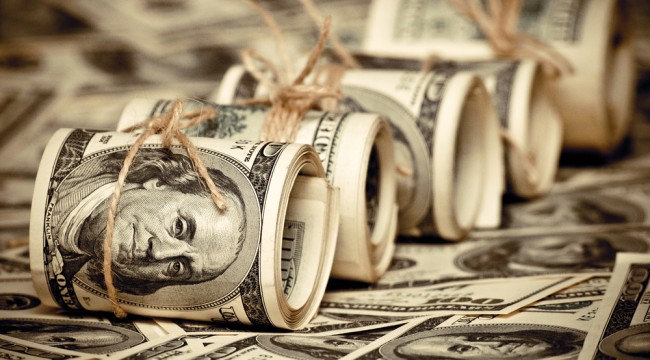How to Protect Your Wealth from Fed Monetary Policy
“This is the biggest redistribution of wealth from the middle class and the poor to the rich ever,” said Stanley Druckenmiller a year ago.
Mr. Druckenmiller is a hedge fund legend. He was George Soros’ right-hand man for 12 years. The “this” he referred to was the Federal Reserve’s perpetual easy-money policy since the Panic of 2008. Druckenmiller offered up one of the most candid admissions you’ll ever hear from the power elite.
Only the top 0.1% experienced a meaningful increase. No longer is a rising tide lifting all boats…
“Who owns assets — the rich, the billionaires. You think Warren Buffett hates this stuff? You think I hate this stuff?”
Theoretically, the Fed’s machinations were supposed to goose the economy. “Maybe,” Druckenmiller said, “this trickle-down monetary policy that gives money to billionaires and, hopefully, we go spend it is going to work. But it hasn’t worked for five years.”
Yesterday, the Fed gave us statistical affirmation of what Druckenmiller blurted out.
Every three years, the Fed issues its “Survey of Consumer Finances.” This latest version covers the years 2010-13. It reveals, in its own words, “substantial disparities in the evolution of income and net worth.”
The wealthiest 10% of households saw median income rise 2%, to $223,200, after adjusting for inflation. Meanwhile, the bottom 60% saw the biggest declines.
The lower middle class also saw its net worth fall an average 9% from 2010-13, mostly because home values were rising less than the inflation rate.
Of course, the Fed lacks the self-awareness to realize its own policies caused this mess.
We come back to a comment by Marc Faber in our virtual pages last December: “The Fed’s monetary policies have failed to boost the real incomes of most people, but have had an enormously favorable impact on just 0.1%, or the ‘1%’ as they are commonly referred to.”
We also come back to this chart. It shows average family income, adjusted for inflation and excluding capital gains, fell for 90% of Americans between 2002-2012. The next 5% were only treading water. Only the top 0.1% experienced a meaningful increase. No longer is a rising tide lifting all boats…
“I would argue,” said Dr. Faber, “that the Fed is fully responsible for the fact that 90% of U.S. families have had declining real incomes (inflation adjusted) over the last 10 years or so (as money printing raised the prices of energy, food, education, transportation, health care, insurance, etc.) and have experienced a decline in their net worth.
“After all, it was the Fed that repeatedly and deliberately created and continues to create bubbles, which benefit only a minority, while hurting the majority.”
Just as Mr. Druckenmiller fessed up a year ago on CNBC.
Our friend Jim Rickards has given a name to the phenomenon we describe.
“Inflation often begins imperceptibly and gains a foothold before it is recognized.”
“Inflation often begins imperceptibly and gains a foothold before it is recognized,” he writes in his book The Death of Money. “This lag in comprehension, important to central banks, is called money illusion, a phrase that refers to a perception that real wealth is being created, so that Keynesian ‘animal spirits’ are aroused.
“Only later is it discovered that bankers and astute investors captured the wealth, and everyday citizens are left with devalued savings, pensions and life insurance.”
That will be a pitchforks-and-torches moment. But we’re not there yet. While the process continues to unfold in slow motion, you need to arrange your finances so you don’t fall behind and end up like the bottom 90% on that chart.
Regards,
Dave Gonigam
for The Daily Reckoning
P.S. We’re joining forces with Mr. Rickards — an “astute investor,” indeed — for an unprecedented project. We’re not exaggerating when we say your financial future hinges on everything he has to say. Readers of our 5 Min. Forecast e-letter will be among the first who are able to access this new project. To make sure you have a chance to get in on this unique new enterprise for yourself, sign up for The 5 Min. Forecast, right here.




Comments: